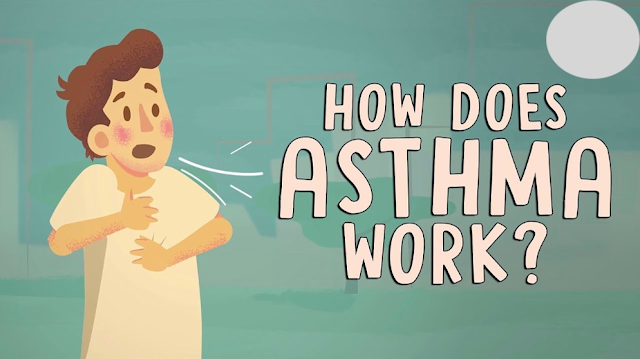The first sign is a cough or wheeze. Your chest may soon feel tight. You start to feel out of breath as your breathing quickens and becomes shallow. These are typical asthma attack symptoms. More than 300 million people worldwide have asthma, and about 250,000 people pass away from it every year. However, why do people get asthma and how can this condition be fatal? The respiratory system is impacted by asthma, especially the bronchi and bronchioles, which are smaller airways. The mucosa, the inner lining of these airways, is encircled by a layer of smooth muscle. The persistent inflammation of the airways in asthmatics can cause them to react more quickly to some triggers. Tobacco smoke, pollen, dust, perfumes, exercise, cold weather, stress, and even the common cold are just a few of the numerous asthma triggers. An asthma attack, or exacerbation, may happen in people with asthma if they are exposed to these factors. But how precisely do such commonplace triggers result in an asthma attack?
The smooth muscle rings that surround an asthmatic’s tiny airways in their lungs tighten and contract when they are exposed to a trigger. The trigger worsens inflammation concurrently, swelling and mucus secretion increase in the mucosal lining. Normally, the body uses this mucus to collect and remove impurities like dust and pollen, but during an asthma attack, it plugs the already-narrowed airways, making breathing much more difficult. These asthmatic symptoms are caused by these effects. The tightness in the chest is caused by the contraction of smooth muscles. Coughing can be a symptom of increased inflammation and excess mucus. The wheezing sound, too? That occurs as a result of the air whistling when it passes through the constricted airways. A person may experience these sensations as if they are out of breath. In contrast, the inflammation that occurs during an asthma episode may make it more difficult to exhale than to inhale. This causes the lungs to over-inflate over time, a condition known as hyperinflation. The body has to work harder to move air into and out of the lungs because of the trapped air inside of them. This may eventually result in the organs and tissues of the body receiving less oxygen. When severe asthma attacks go untreated, the body sometimes can’t keep up, which might cause an oxygen shortage that can be fatal.
How can asthma sufferers avoid these painful and perhaps lethal attacks? Getting rid of triggers is one strategy. Unfortunately, because of how unpredictable the world is, it is not always possible to avoid being exposed to triggers. Inhalers, the mainstay of asthma treatment, come into play here. Asthmatics who use these drugs can both manage and prevent their asthma symptoms. To treat the issue at its root, inhalers deliver medication along the afflicted airways using a liquid mist or fine powder. There are two types of them. There are painkillers that treat symptoms right away and have beta-agonists in them. Beta-agonists loosen tight muscles, enabling the airways to open up and let more air enter and exit the lungs. The other kind of inhaler contains corticosteroids and is used as a preventative medicine to treat asthma symptoms over time. Asthma can be managed because corticosteroids lower airway sensitivity and inflammation. Additionally, they are essential in preventing long-term harm from persistent inflammation, which can result in scarring of the airways. Inhalers are well known to be quite effective and have improved the lives of many individuals.
Although we have made great strides in diagnosing and treating asthma, we still don’t fully understand its underlying causes. Currently, we think that a combination of genetic and environmental variables contributes, possibly beginning in infancy. Even the incidence of asthma has been connected in recent research. This could be as a result of various things, such as being exposed to more toxins and environmental irritants or finding it difficult to get medical attention or treatment. We can keep coming up with improved strategies to maintain people’s airways as our knowledge of asthma advances.
Related Searches:
how does asthma affect the lungs, how to prevent asthma, what is the cause of asthma, types of asthma, asthma symptoms, asthma pathophysiology, asthma attack, asthma treatment
List of Tags:
TED, TED-Ed, TED Education, TED Ed, Chris Gaw, Zedem Media, asthma, breathing, asthma attak, respiratory system, bronchioles, smoke, pollen, lungs, mucosa, mucosal lining, constriction, wheezing, chest tightness, hyperinflation, inhaler, beta-agonist, corticosteroids
